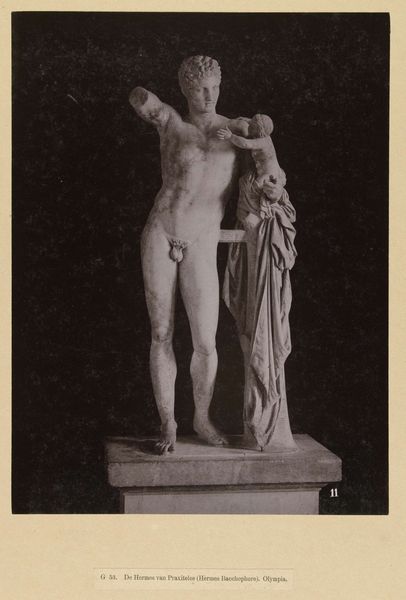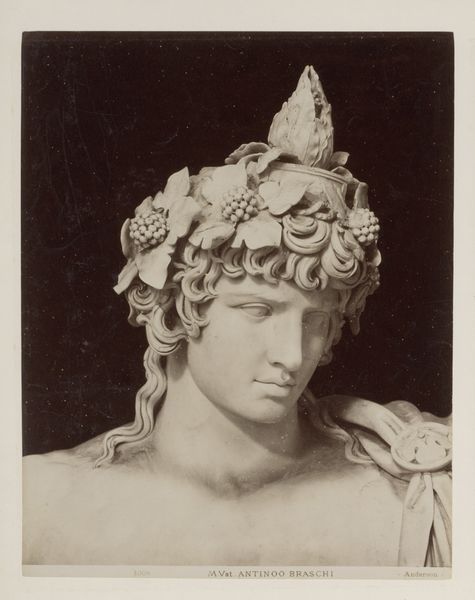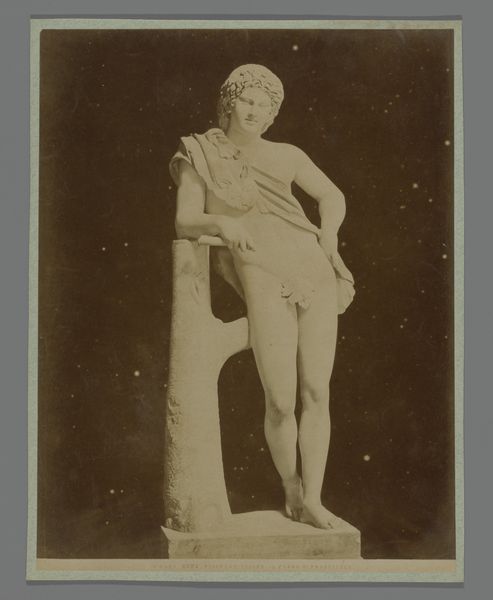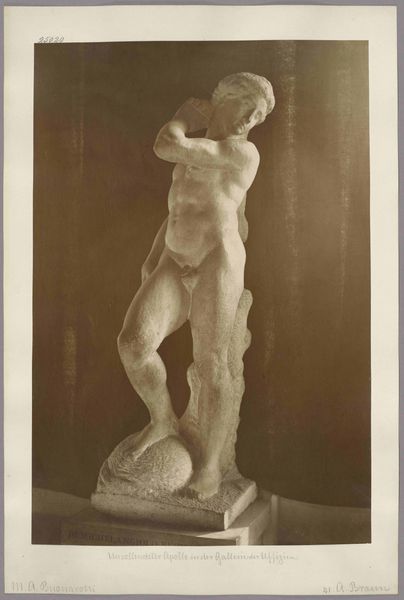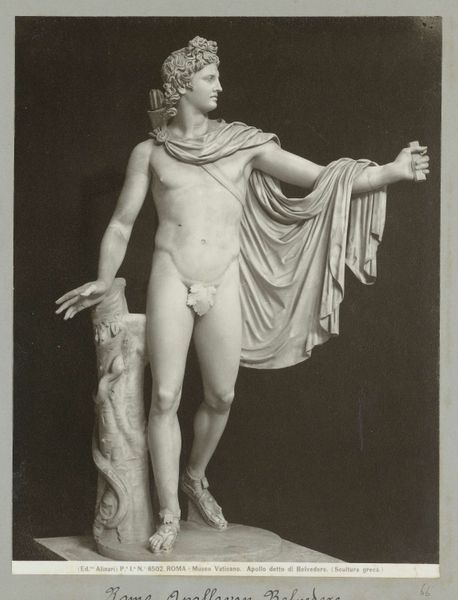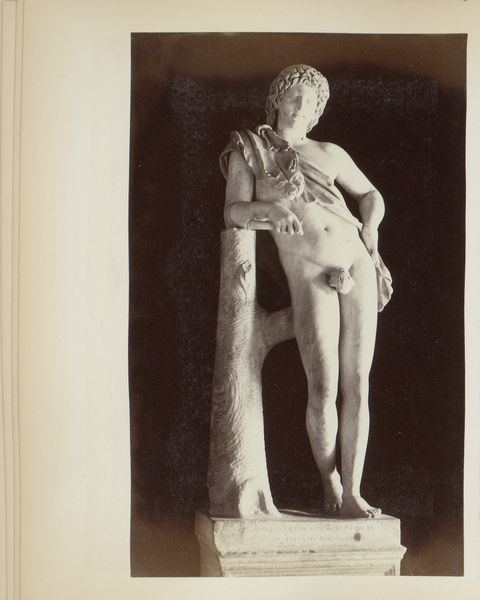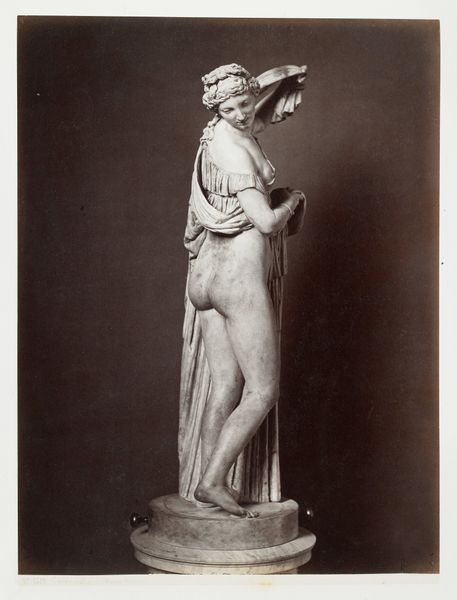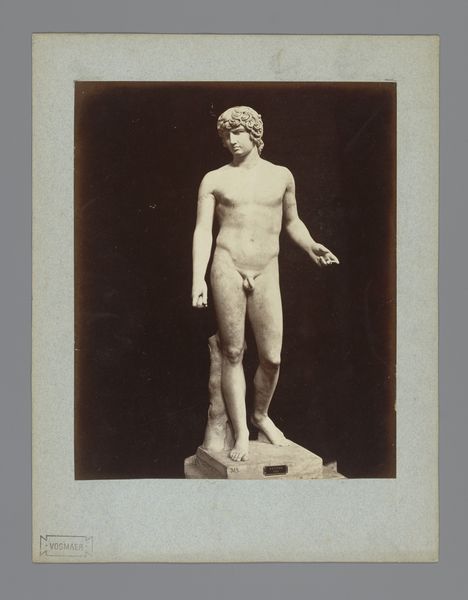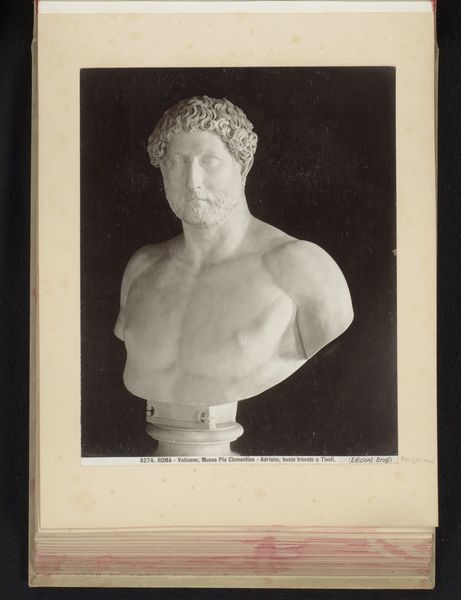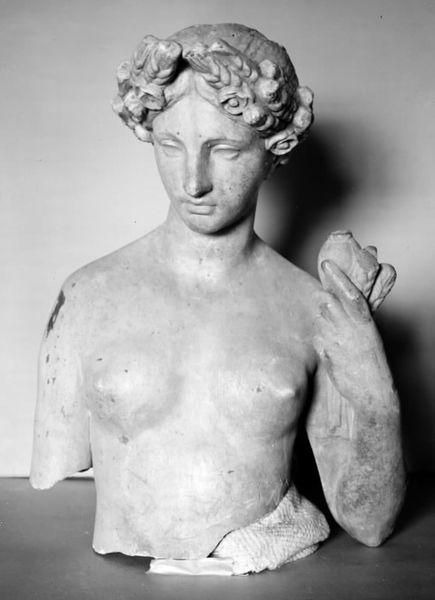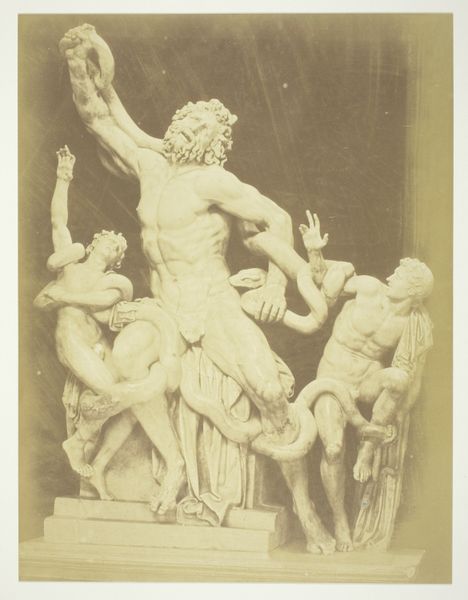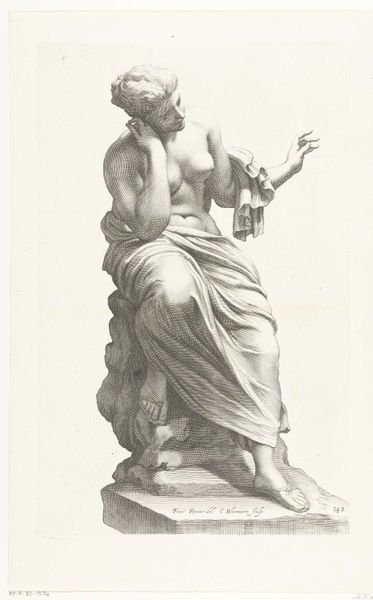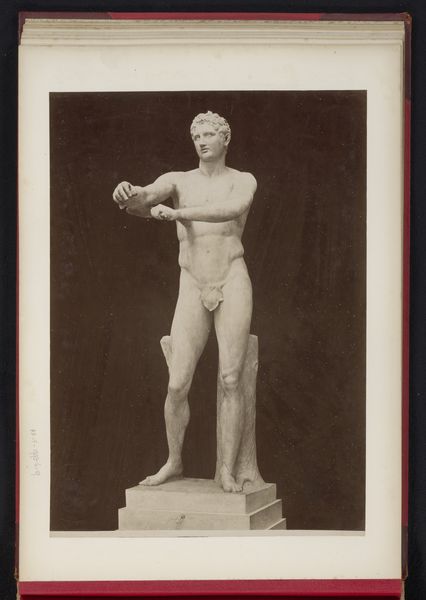
photography, sculpture, marble
#
portrait
#
greek-and-roman-art
#
classical-realism
#
photography
#
sculpture
#
marble
Dimensions: height 290 mm, width 220 mm, height 559 mm, width 467 mm
Copyright: Rijks Museum: Open Domain
Curator: This photograph, taken between 1890 and 1895, captures a fragment of a marble sculpture: a detail of Hermes with the infant Dionysos. Editor: It's immediately striking, isn't it? The dramatic contrast between the smooth marble and the rough break where the arm once was, creates a sense of incompleteness, yet immense strength. Curator: Absolutely. Let's consider the craftsmanship involved in this piece, though we’re viewing a photographic rendering of it. Think about the extraction of marble—likely from quarries dependent on the labor of enslaved people–, the tools used to carve the stone, the deliberate choices in depicting human anatomy to convey both divine perfection and human vulnerability. This image serves as a material trace of production that is as much about a deity, but just as much about enslaved workers. Editor: I agree, understanding production contextualizes value. But the play of light and shadow across the surface is critical to consider in and of itself; that inherent formal structure establishes the depth and contours of the figures. Look at the positioning of Hermes' head and the gentle turn of his face: it signifies psychological complexity and tenderness, heightened by the use of contrapposto in his stance which gives an effortless sense of naturalism. Curator: True, but it’s interesting how photography at this moment in time documented the materiality of objects, allowing further distribution to mass audiences. Consider its proliferation. It created possibilities for experiencing “art” for some populations, yet it simultaneously obfuscated access, allowing specific patrons, in reality, to experience “the real” of classical antiquities in real time. Editor: Agreed! By transforming a three-dimensional marble sculpture into a two-dimensional photograph, it underscores the transition of tactile experience into visual consumption, mediated through the artist’s chosen lens and our current view as readers of this photograph. Curator: Precisely! We're really presented with several layers of artistic choices— from its sculptural origins in marble production all the way through circulation via photography – offering insight into cultural consumption over time. Editor: A captivating blend of ancient craft and emergent modern means. The convergence of timeless artistry and technological documentation offers a powerful view into both epochs of creativity.
Comments
No comments
Be the first to comment and join the conversation on the ultimate creative platform.

